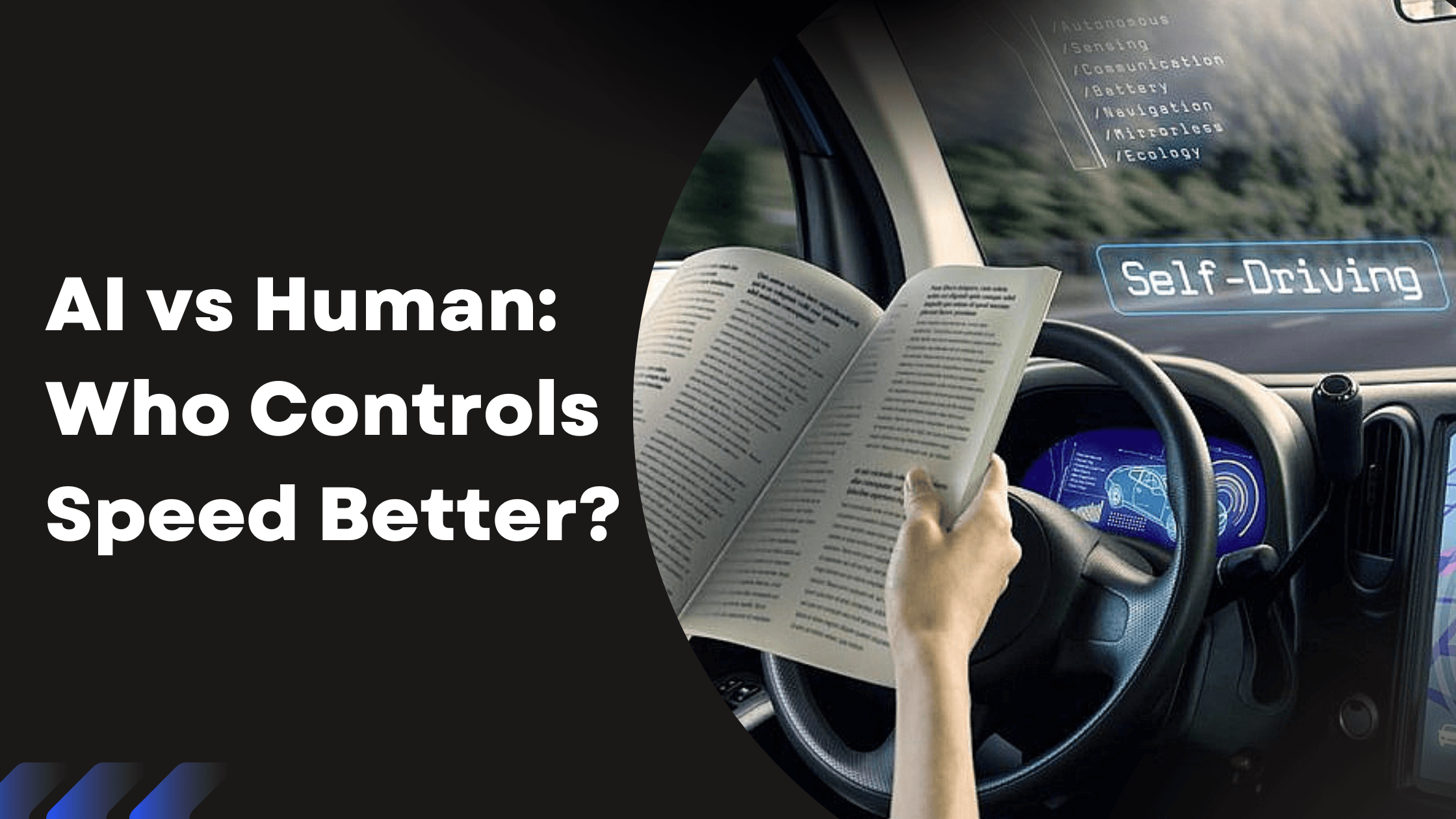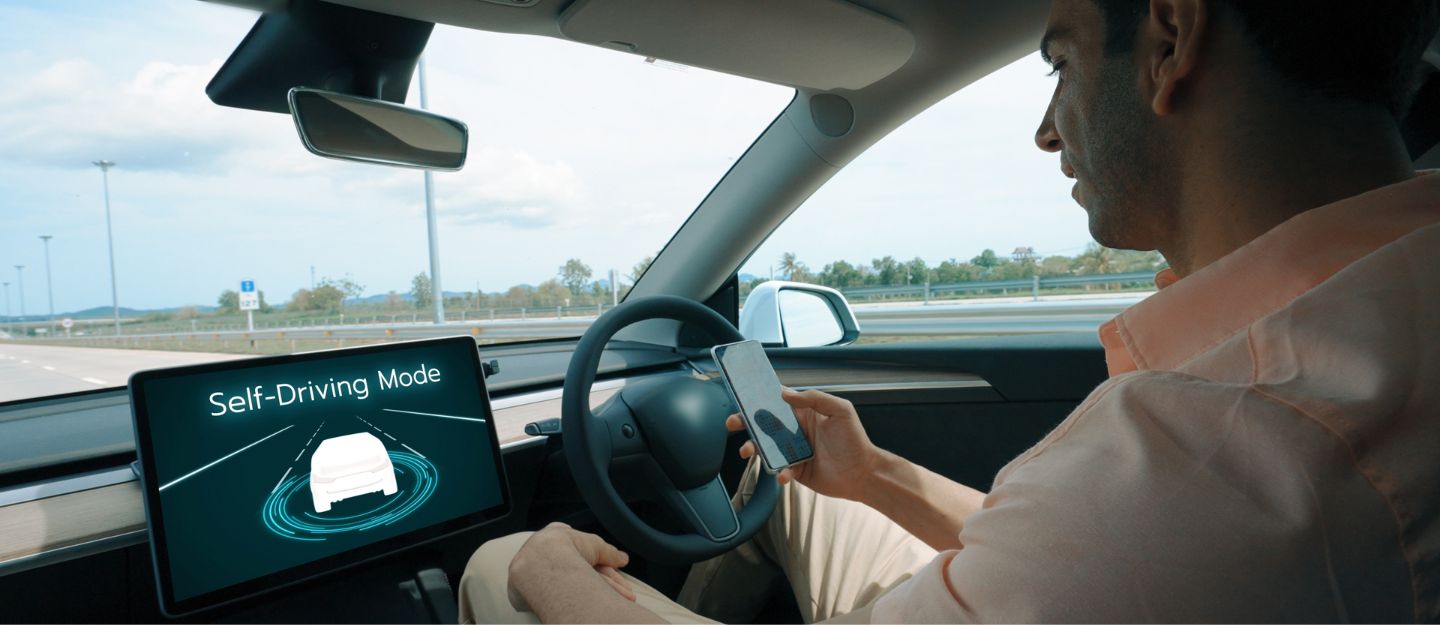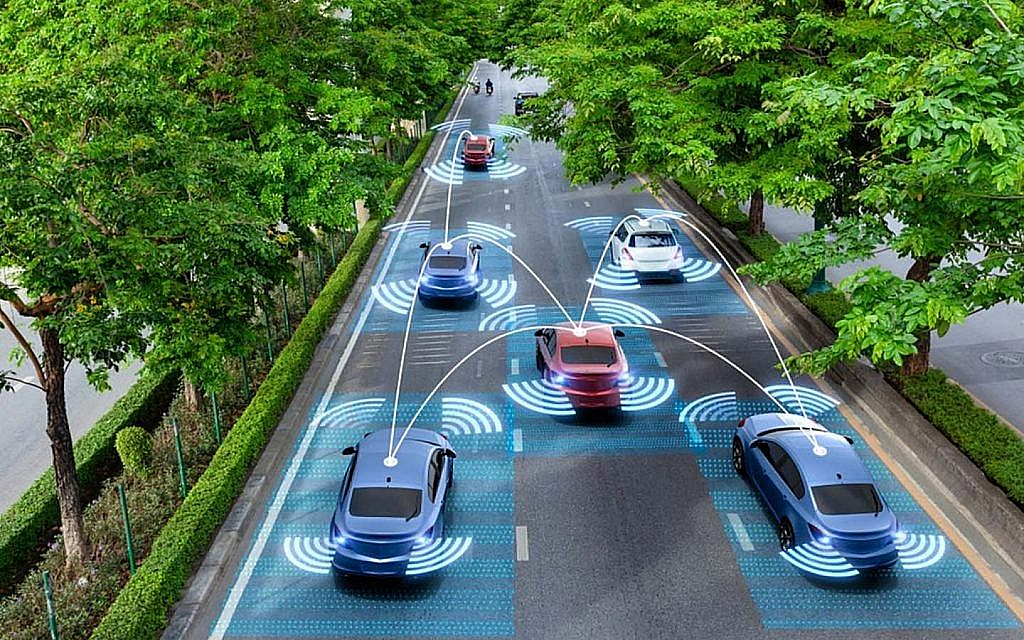AI vs Human Drivers: Who Manages Speed Better?
Jun 3, 2025 Resolute Dynamics

Speed. It’s one of the biggest factors behind both traffic efficiency and road accidents. Whether you’re driving a family sedan or managing an entire fleet of trucks, how speed is controlled can be the difference between safety and disaster.
So, the big question is: who manages speed better—humans or AI systems? Let’s dive into this debate and see what really works best on today’s roads.
The Human Element in Speed Management

For over a century, speed control has rested in human hands. Whether it’s a compact car or a 40-ton truck, the choice of how fast to go has relied on one thing: the driver.
But people aren’t machines. We get tired. We get distracted. We rush. And in today’s world—more vehicles, more pressure, less room for error—that’s a risky mix.
So what exactly affects a driver’s ability to manage speed—and why does human judgment, even at its best, still fall short?
1. Intuition and Experience: The Double-Edged Sword
Drivers often rely on gut feeling and learned habits to control speed. This is called procedural memory—the mental autopilot developed through repeated driving.
For example:
-
A seasoned driver might instinctively slow down near a school zone—even without seeing a sign.
-
In familiar areas, drivers can predict when to ease off the accelerator before a bend or traffic light.
But this instinct can also lead to problems:
-
Overconfidence in known routes may cause drivers to exceed speed limits unconsciously.
-
Habitual speeding, especially on wide or empty roads, becomes normalized behavior.
2. Fatigue: A Slow, Silent Killer
Driver fatigue is one of the leading contributors to poor speed management—especially for commercial and long-distance drivers.
Fatigue impacts:
-
Reaction time – Slower to recognize hazards and respond.
-
Judgment – Impaired decision-making can lead to unsafe speeds in dangerous conditions.
-
Attention span – Micro-sleeps (brief lapses in consciousness) at the wheel can be deadly.
The National Sleep Foundation reports that 18 hours without sleep can impair reaction time as much as having a 0.05% blood alcohol level. That’s not just being tired—it’s driving under the influence of exhaustion.
For fleet operators, this isn’t something to guess at. Telematics and fatigue-detection cameras can flag drowsy driving before it turns into a crash. The tech is there. The risks are real. Ignoring them isn’t an option.
3. Distractions: The Modern Threat
Distractions behind the wheel—whether visual, manual, or cognitive—have become the number one road safety issue globally.
Major sources of distraction:
-
Mobile phones (texting, calling, navigation apps)
-
In-vehicle systems (infotainment, music, climate controls)
-
External stimuli (billboards, pedestrian movement, roadside events)
-
Passengers (especially teens or children)
Distracted drivers often fail to maintain consistent speed:
-
Speed may drift up on highways due to mental disengagement.
-
Sudden braking or over-acceleration can occur due to a delayed reaction to hazards.
This behavior results in erratic speed patterns, increased collision risk, and reduced traffic flow predictability.
4. Emotions Behind the Wheel: Hidden Influence
Emotions shape how people drive—especially when it comes to speed.
-
Anger can trigger aggressive driving and speeding, known as “velocity venting.”
-
Stress or anxiety might cause hesitation or abrupt deceleration.
-
Euphoria or thrill-seeking leads to speeding as a form of risk-taking.
-
Impatience in traffic congestion may result in dangerous acceleration once the road opens.
Studies in traffic psychology show that mood directly affects speed regulation. Drivers in a negative emotional state are more likely to break speed limits or ignore warning signs.
5. Inconsistent Behavior in Variable Conditions
Unlike AI, which follows fixed algorithms, human behavior changes with mood, environment, and fatigue. This inconsistency makes manual speed management unreliable—especially in difficult driving conditions.
Common inconsistencies:
-
In fog, some slow down drastically; others continue at unsafe speeds.
-
In rain, hydroplaning risks go ignored by overconfident drivers.
-
On rural roads, drivers often assume higher limits due to a lack of signage.
This unpredictability increases risk in heterogeneous traffic environments, where not every driver reacts the same way to the same stimuli.
6. Adaptive Reasoning: Where Humans Still Excel
Despite their flaws, human drivers still outperform AI in one key area—adaptive reasoning in unpredictable situations.
Humans can:
-
Read non-verbal cues (like a pedestrian’s body language or a cyclist’s hesitation)
-
Interpret complex, ambiguous situations (e.g., a construction worker’s unclear hand signals)
-
React to rare anomalies that an AI may not be trained for
This ability to reason without data is something AI still struggles with, especially in edge-case scenarios.
So while AI can ensure safe, consistent speed in known conditions, humans are better at handling “unknown unknowns.”
7. Final Thoughts: Strengths vs Limitations
Humans are adaptable but unreliable. We can make quick judgments and feel out uncertain conditions, but we’re also emotional, distracted, and biologically limited.
That’s why more fleets are turning to AI—not as a luxury, but as a backup brain.
From ADAS to real-time speed alerts and predictive AI modules, these systems aren’t just helpful—they step in where human judgment falls short. They don’t get distracted. They don’t drift. And they don’t miss warning signs that drivers often do.
In the long run, speed management is safest when humans and machines work together—combining adaptability with precision.
The Race for Safer Speed Control
Speed control isn’t just about fast or slow—it’s about timing, context, and awareness.
In cities, you’re dealing with sudden stops, unpredictable drivers, and pedestrians who think crosswalks are optional. On highways, it’s about steady cruising, longer stopping distances, and fast decisions at high speeds.
That’s why managing speed matters so much—and why it’s shifting away from the driver alone. With sensors, telematics, and real-time logic, AI is stepping up to keep vehicles in check and out of trouble.
How AI Manages Vehicle Speed

Speed plays a central role in road safety. Get it wrong, and the consequences add up—more accidents, wasted fuel, and fines that hit where it hurts.
Human drivers make speed decisions based on habit, emotion, or gut feel. AI doesn’t. It uses real-time data, pattern recognition, and logic that doesn’t blink. The result? More consistent control and fewer costly mistakes.
Let’s dig into how AI handles speed—and why it’s rewriting the playbook for modern fleets.
1. Advanced Driver Assistance Systems (ADAS): The Digital Co-Pilot
At the heart of AI-driven speed management is ADAS—a suite of technologies that act as the vehicle’s senses.
ADAS uses multiple sensors, including:
-
Cameras to detect road signs, lane markings, and vehicles.
-
RADAR and LiDAR to measure distance and object speed.
-
Ultrasonic sensors for close-range detection (e.g., in traffic or parking).
How this affects speed:
-
ADAS systems detect speed limits from road signs or GPS mapping.
-
If a driver exceeds the limit, the system can issue audible alerts or vibrate the steering wheel.
-
In adaptive cruise control mode, ADAS adjusts speed automatically based on the vehicle in front—maintaining safe following distances without manual input.
2. Telematics: Real-Time Data for Smarter Speed Control
Telematics refers to the integration of telecommunications and informatics to monitor and manage vehicle data.
How telematics influences speed:
-
GPS + onboard diagnostics (OBD) collect live data on vehicle speed, acceleration, braking, and more.
-
AI systems use this data to create behavior models, spotting patterns like habitual speeding or sudden braking.
-
Fleet managers receive real-time alerts when a driver exceeds thresholds—allowing intervention before an incident occurs.
When combined with AI, telematics systems become proactive—not just reactive.
For example:
If a delivery van regularly speeds in residential zones, the AI system can flag that route and suggest speed governors or re-routing to reduce risk.
3. Intelligent Speed Control Modules: Automated Precision
AI doesn’t just observe—it acts.
Electronic Control Units (ECUs) use AI algorithms to:
-
Adjust throttle sensitivity based on terrain or traffic density.
-
Regulate gear shifting for smoother, speed-conscious driving.
-
Activate engine braking to reduce speed on slopes, reducing wear on brakes.
In more advanced systems like those developed by Resolute Dynamics, AI controls are calibrated to optimize:
-
Speed compliance
-
Fuel economy
-
Vehicle wear-and-tear
-
Road risk profiles
This makes it possible to enforce intelligent speed adaptation (ISA)—where the system automatically slows the vehicle when entering a new speed zone, a school district, or a dangerous curve.
4. Predictive Models: Anticipating Speed Needs
Unlike traditional cruise control that simply holds a speed, AI-driven systems are predictive.
They use machine learning to:
-
Analyze past trips and driver behavior
-
Detect traffic trends, road types, and risk areas
-
Predict when a slow-down will be needed, even before the driver sees a hazard
Example:
If the system knows from data that a sharp curve causes frequent deceleration, it will preemptively reduce speed ahead of time, preventing harsh braking and increasing passenger comfort.
This predictive ability allows AI to manage speed dynamically, not just based on what’s seen—but on what’s expected.
5. Real-Time Communication: Speed Control in a Connected Ecosystem
In modern fleets, AI doesn’t operate in isolation. Through Vehicle-to-Everything (V2X) communication, vehicles share speed and positioning data with:
-
Other vehicles (V2V)
-
Roadside infrastructure (V2I)
-
Cloud-based systems (V2C)
With this data, AI systems can:
-
Detect traffic slowdowns ahead in real time
-
Adjust speed to accommodate dynamic traffic signals
-
Avoid collision chains by coordinating with nearby vehicles
For example, if five connected vehicles in a convoy brake due to debris on the road, AI in the sixth vehicle will slow down in advance—even before the debris is visible to its own sensors.
6. Use Case: Resolute Dynamics’ AI Speed Management
Resolute Dynamics offers AI-powered solutions that combine all of the above into a unified Capture–Connect–Control ecosystem.
How their system works:
-
Capture: AI vision detects road signs, pedestrian activity, and vehicle movement.
-
Connect: Real-time data from each vehicle is sent to a cloud system and shared across fleets.
-
Control: Intelligent modules adjust vehicle behavior—including speed—autonomously.
Results include:
-
Up to 35% fewer speeding incidents in monitored fleets
-
Significant fuel savings through smoother acceleration
-
Improved regulatory compliance across borders and speed zones
Their approach is designed for fleets operating across diverse environments—from Dubai highways to narrow roads in Southeast Asia.
Summary: AI Doesn’t Guess—It Governs Speed Logically

Unlike humans, AI systems:
-
Never get tired
-
Don’t overestimate their abilities
-
React in milliseconds
-
Rely on sensor data, not gut feeling
AI brings together sensors, telematics, control logic, and predictive insight to manage speed with precision. No guesswork. No off days. Just consistent, calculated control.
For commercial fleets, that’s a big win. It means fewer incidents, tighter cost control, and operations that run smarter—not harder.
Speed Compliance: AI vs Human Behavior
Let’s face it—humans don’t always follow speed limits. Whether it’s running late or feeling confident on an empty road, speed violations happen all the time.
AI doesn’t take that risk.
-
Speed limits are preloaded into navigation and control systems.
-
AI systems alert the driver or even slow down the vehicle if the speed goes over safe limits.
-
In fleet environments, AI helps monitor driver behavior across hundreds of vehicles and ensures compliance.
For example, fleets using Resolute Dynamics’ technology saw a noticeable drop in speeding violations. AI keeps every vehicle within the rules, every time.
Risk Management and Emergency Response
What happens in a split second can save—or risk—a life.
Humans take time to react. The average reaction time is around 1.5 seconds. That might not sound like much, but at 60 mph, the vehicle covers about 132 feet in that time.
AI reacts in milliseconds. It doesn’t panic, hesitate, or freeze. When there’s danger—like a car braking suddenly or a pedestrian crossing—the system:
-
Sends immediate alerts,
-
Applies emergency brakes,
-
Adjusts vehicle speed to avoid impact.
These automated decisions, based on sensor fusion and real-time calculations, can mean the difference between a close call and a collision.
Legal, Ethical, and Regulatory Implications
With AI taking the wheel—at least partially—new legal and ethical questions pop up.
-
Who’s responsible if AI fails?
-
Can regulators trust machines over humans?
-
Are AI systems allowed to override human input?
In many regions like the UAE, India, and Southeast Asia, governments are beginning to embrace AI in transport regulation. Smart compliance systems are being approved for fleets. AI-based speed management tools, like those from Resolute Dynamics, are already helping transport companies stay compliant.
Regulations are evolving to match the pace of technology—and AI is shaping how safety laws are enforced.
Fleet-Level Impact and Operational Efficiency
In logistics and transport, time is money. But safety equals savings, too.
-
AI controls speed to reduce fuel wastage.
-
It keeps vehicles within maintenance-safe ranges.
-
It minimizes harsh braking, sudden acceleration, and risky behavior.
Fleet managers using AI see better driving habits, lower insurance premiums, and fewer accidents. Over time, the cost of installing AI systems is recovered many times over in operational efficiency.
With over 200,000 connected vehicles under its watch, Resolute Dynamics proves how tech-driven speed control boosts both safety and profits.
Challenges and Limitations of AI Systems
AI isn’t perfect.
-
It depends on data accuracy—bad inputs can lead to wrong decisions.
-
Sensors can malfunction or get blocked by dirt or snow.
-
It struggles with rare or highly unpredictable situations that aren’t in its database.
Also, AI can’t fully replace human flexibility just yet. There are moments where a driver’s instinct matters—like swerving around unexpected road debris or interpreting unmarked detours.
That’s why most experts agree: AI should assist, not fully replace, human drivers—at least for now.
Future of Speed Control: Collaboration, Not Competition
The future isn’t about choosing between AI and humans. It’s about blending strengths.
Imagine a system where AI:
-
Manages speed in routine and high-risk areas,
-
Warns drivers before they make mistakes,
-
Keeps a digital eye on the road 24/7,
…while human drivers bring intuition, creativity, and emotional intelligence into the mix.
Fleet tech like Resolute Dynamics’ Capture–Connect–Control platform already uses this collaborative model, where AI supports the driver instead of replacing them.
Who Wins the Speed Safety Challenge?
So—who manages speed better?
AI wins on consistency, reaction time, and data-driven decisions. It’s unmatched in environments where split-second decisions and precise compliance matter most.
Humans still lead in adaptability, judgment in gray areas, and understanding of context.
But the ultimate solution lies in working together. When AI and humans combine forces, speed control becomes smarter, safer, and more efficient—especially for fleets, where every mile matters.
Want to stay ahead in fleet safety and speed control? Intelligent vehicle technology is no longer the future. It’s the present—shaping a safer world, one road at a time.